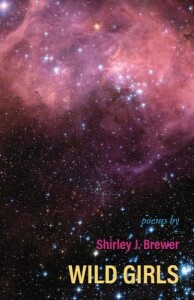
There were no maps for those of us who came of age at the beginning of the Second Wave of the Women’s Movement. Or rather, we threw them away, the ones that told us we could only work as a nurse, teacher, secretary, or domestic servant. The ones that said we had to find a man, marry, have children, and then confine our labors to kids and kitchens.
We were left having to create our own path, our own definition of what it could mean to be a woman. I read biographies of women artists, writers, and scientists looking for models.
My friend Shirley (full disclosure) discarded her Catholic schoolgirl veil and took on the world in sequins and a feather boa. Breezy and brave, with a heart as big as the Chesapeake, she sends us these letters from her world.
A chameleon, she revels in the brightest colors and slips into one woman’s heart after another: Libbie Custer (George Armstrong), Betsy Patterson Bonaparte (Jerome), Agnes Lake Hitchcock (Wild Bill), Annie Oakley, and others. She writes praise poems for Annette Funicello, her Aunt Alvina, and a clerk at Home Depot.
Imagination runs wild as she writes poems about having tea with Queen Elizabeth, a date with Richard Gere, and dancing with a museum guard. She even writes an “it” poem from the point of view of Marilyn Monroe’s lipstick.
Her ekphrastic poems—referencing the paintings that inspired them—remind us that the women depicted on these old canvases were real people, women who perhaps might like to exchange their ruffs and heavy skirts for a fuchsia gown with spaghetti straps. Daring, courageous, Shirley even does a takeoff on Rilke’s most famous poem.
She is a master at using humor in poetry. Many of these poems will make you chuckle and snort. But her passion is not only for glitz and glamour. Her elegies to people we know and those we didn’t until now hurt our hearts and remind us that we mourn together. Her empathy will not surprise anyone who has read her collection After Words, a series of poems on the 2010 stabbing death of Stephen Pitcairn, an aspiring doctor.
The brave poems in this collection define one woman’s way of being in the world. It is a way we can all appreciate and applaud and find ourselves in. She pulls off her magic through humor and compassion and turns that surprise us. She awakens the wild, original, and authentic selves that we know ourselves to be.
What poet’s work have you read recently that ignited your imagination?
Disclosure of Material Connection: I received a copy of this book free from the author. I was not required to write a positive review. The opinions I have expressed are my own.

